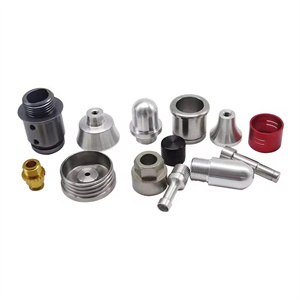Tempering Of CNC Turned Components
The tempering process of CNC Turned Components is an important heat treatment step used to improve the mechanical properties of materials.
Tempering steps
Preparation work
Clean CNC Turned Components: Ensure that the surface of the parts is free of oil, impurities, and other pollutants to reduce the impact on the tempering effect.
Inspect parts: Check CNC Turned Components for cracks, defects, or damage to avoid problems during tempering.
Set tempering temperature
Set an appropriate tempering temperature based on the material type and required performance of CNC Turned Components.
Low temperature tempering: 150-250 ℃, suitable for parts that require high hardness and wear resistance.
Medium temperature tempering: 350-500 ℃, suitable for parts that require high elasticity and yield point.
High temperature tempering: above 500-650 ℃, suitable for parts that require comprehensive mechanical properties with good strength, plasticity, and toughness.
heating
Put the CNC Turned Components into the tempering furnace and heat them evenly to the set tempering temperature.
During the heating process, attention should be paid to controlling the heating rate to avoid excessive deformation or cracking of the parts.
heat preservation
After the part reaches the set tempering temperature, it needs to be maintained for a period of time to ensure uniform internal temperature of the part.
The insulation time depends on the material, thickness, and required performance of the parts. Typically, the low-temperature tempering time is 1-2 hours, while the medium and high-temperature tempering time is calculated according to the formula T=aD+b (where D is the effective thickness of the part, a is the tempering coefficient, and b is the time base).
cooling
After the insulation time is over, the parts need to gradually cool down.
The cooling method can be natural cooling, air cooling, or using other cooling media (such as water, oil, etc.), depending on the material and performance requirements of the parts.
The cooling speed should be moderate to avoid deformation or cracking of parts caused by too fast or too slow.
Performance testing
After tempering, CNC Turned Components need to undergo performance testing, including hardness testing, tensile testing, impact testing, etc., to ensure that they meet the design requirements.
matters needing attention
Temperature control: Ensure that the temperature of the tempering furnace is accurately controlled within the set tempering temperature range, to avoid excessive or insufficient temperature affecting the performance of the parts.
Time control: Strictly follow the set insulation time for operation to avoid affecting the tempering effect if it is too long or too short.
Cooling speed: Select the appropriate cooling method and speed based on the material and performance requirements of the parts.
Equipment maintenance: Regularly inspect and maintain the tempering furnace and other related equipment to ensure that the equipment is in good condition.
Safe operation: During the tempering process, it is necessary to follow the safety operating procedures and pay attention to measures such as fire prevention and scalding prevention.
